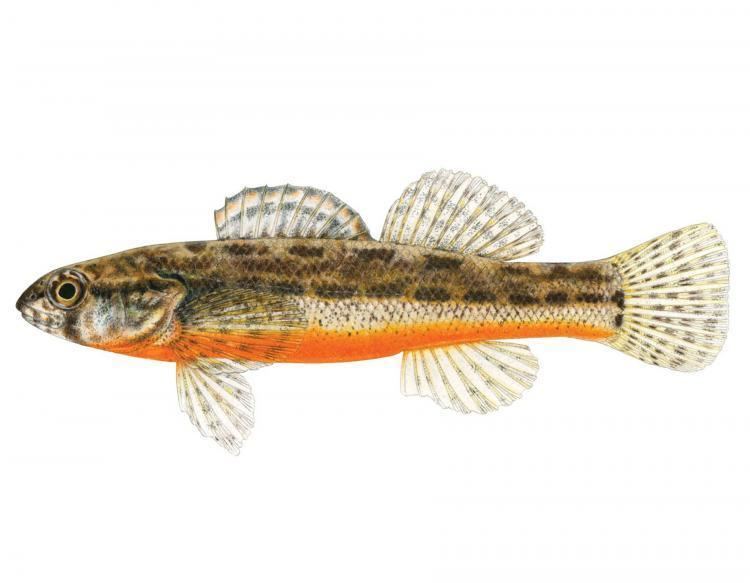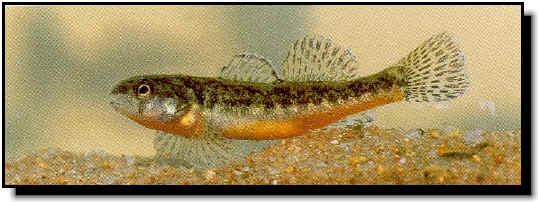Phylum Chordata Rank Species | Scientific name Etheostoma cragini Higher classification Etheostoma | |
 | ||
Similar Etheostoma, Redfin darter, Notropis girardi, Redband darter, Yellowcheek darter | ||
Arkansas darter conservation
The Arkansas darter (Etheostoma cragini) is a species of small ray-finned fish in the perch family, Percidae. It is endemic to Kansas, Arkansas, Missouri, Colorado, and Oklahoma.
Contents

Arkansas darter
Description

The Arkansas darter has an olive-brown dorsal surface spotted with fine black markings, and a yellowish-white underside except that in males during the breeding season, the belly turns bright orange. It has a blackish wedge-shaped blotch beneath its eye and there are 12 to 14 dark stripes along the sides. This species reaches a maximum size of 6 cm (2.4 in).
Distribution

Although it is known as the Arkansas darter, this fish is primarily found in Kansas. Its range is the Arkansas River drainage system and this extends into eastern Colorado, southwestern Missouri, northeastern Arkansas and north-central Oklahoma, as well.
Behavior

The Arkansas darter moves up and down stream by as much as several kilometers in accordance with varying water flows. It feeds on small insects and their larvae and sometimes consumes plant material such as seeds. It reaches sexual maturity at about a year and spawns during the spring and summer. The eggs are laid in shallow water on gravel bottoms in open areas or among organic debris accumulations.
Status
The IUCN lists the Arkansas darter as being Near Threatened. It has a limited distribution and threats to this species include the lowering of the water level in streams resulting from groundwater pumping in the western part of its range, and potential development pressures in the eastern part. Drought can also cause water levels to fall and runoff from feed lots may cause pollution.
